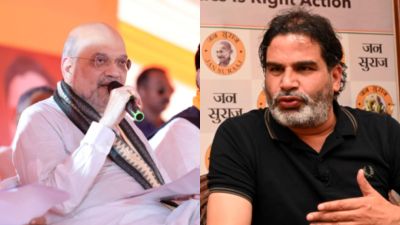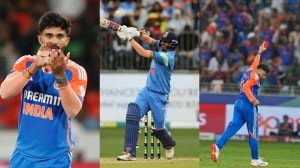Art of Living
ANGRY young man. Amitabh Bachchan may not know it, but Delhi could have coined the term for artist A Ramachandran way back in the 1960s. The...

ANGRY young man. Amitabh Bachchan may not know it, but Delhi could have coined the term for artist A Ramachandran way back in the 1960s. The first of his canvases that the city saw were dominated by tortured, tonsured bodies to express his anguish at the exploitation of the poor. Forty years later, beautiful lotus ponds have made their way into his works. Do they signify the mellowing of a man? ‘‘I guess that happens when a painter gets good food. He keeps in good health and makes happy images,’’ jokes Ramachandran, 58.
Anger, happiness, satire, travel, children… Ramachandran’s art has never been alienated from his life. And now vignettes of his life experiences in paintings, murals, stamps, books and illustrations are accessible to the viewer in an ongoing retrospective at the National Gallery of Modern Art, New Delhi.
The various periods of the artist’s life have been carefully broken into segments by curator Rupika Chawla. The first, fittingly titled ‘The Dark Period’ draws largely from his experience in communist Kerala. ‘‘The communist movement was gathering steam while I was growing up in Kerala. It obviously left an impression on my mind. We all wanted to rebel, we thought we could change the world with our art,’’ says Ramachandran.
Covering the period 1965-1977, the main theme of ‘The Dark Period’ was protests against injustice. It coincided with the artist’s discovery of mythology, and certain paintings interpret incidents from the epics. The ‘End of Yadavas’ (1973), for instance, depicts the mayhem preceding the destruction of the Yadavas, who were wiped out by a curse of Gandhari. The blindfolded mother of the Kauravas herself is the subject of another painting from the same period.
‘‘Myths are a part of our culture,’’ points out Ramachandran. ‘‘ I paint for the masses. I’d prefer to be a Premchand, not a Rushdie. The British introduced art schools, they taught us their grammar but their concepts had no relevance in the Indian context.’’ The second segment in the exhibition is ‘The Faceless Woman’, inspired by visits to Rajasthan in the mid-’70s. Combining Rajasthani and Pahari miniature styles with the knowledge of the nuclear tests at Pokhran, Ramachandran came out with the Nuclear Ragini series.
Also dating back to this period is ‘Yayati’. ‘‘I have done better paintings, I don’t know why this one is put on such a high pedestal,’’ says the artist of the 60-feet long painting that is considered a career milestone. ‘‘Surprisingly, back in the ’80s, it didn’t find many admirers. It was dismissed as backward-looking.’’
The work—a proud part of theatre stalwart E Alkazi’s collection—is divided into three sections, Ushas, Madhyana and Sandhya, to narrate the tale of King Yayati who ages prematurely due to a curse, and also turns into a hedonist. The story might be someone else’s but the metaphor is all Ramachandran.
Rajasthan, too, is a recurring theme, cropping up as faceless women, or gypsies or Bhils. One section is devoted entirely to two Bhil girls, Savita and Hanna, who appear in his works over a long stretch of time.
The lotus ponds of Udaipur also drew him back. ‘‘Each time I would go there, nature was singing a different song for me. A cataract operation had spoilt the vision in my right eye. I vowed to use my left eye in the best way possible,’’ Ramachandran analyses. ‘‘But it’s not the content part of it which is important. Just the visual appeal says it all.’’
From art-as-revolt, through the realisation that ‘‘it doesn’t work that way’’, to his growing bond with nature, the retrospective traces a path as intriguing as it is identifiable.
But what made him take to sculpture or book illustration? The answer is typical: ‘‘Santiniketan taught me that artists do not live in water-tight compartments. We learnt and practised different kinds of art. Whether it is sculpture or illustration, art is art. Sometimes it is two-dimensional, sometimes three.’’
And if it is an entire life? Then it’s called a retrospective.
A Ramachandran retrospective, at NGMA, New Delhi, till January 11, 2004





- 01
- 02
- 03
- 04
- 05


























